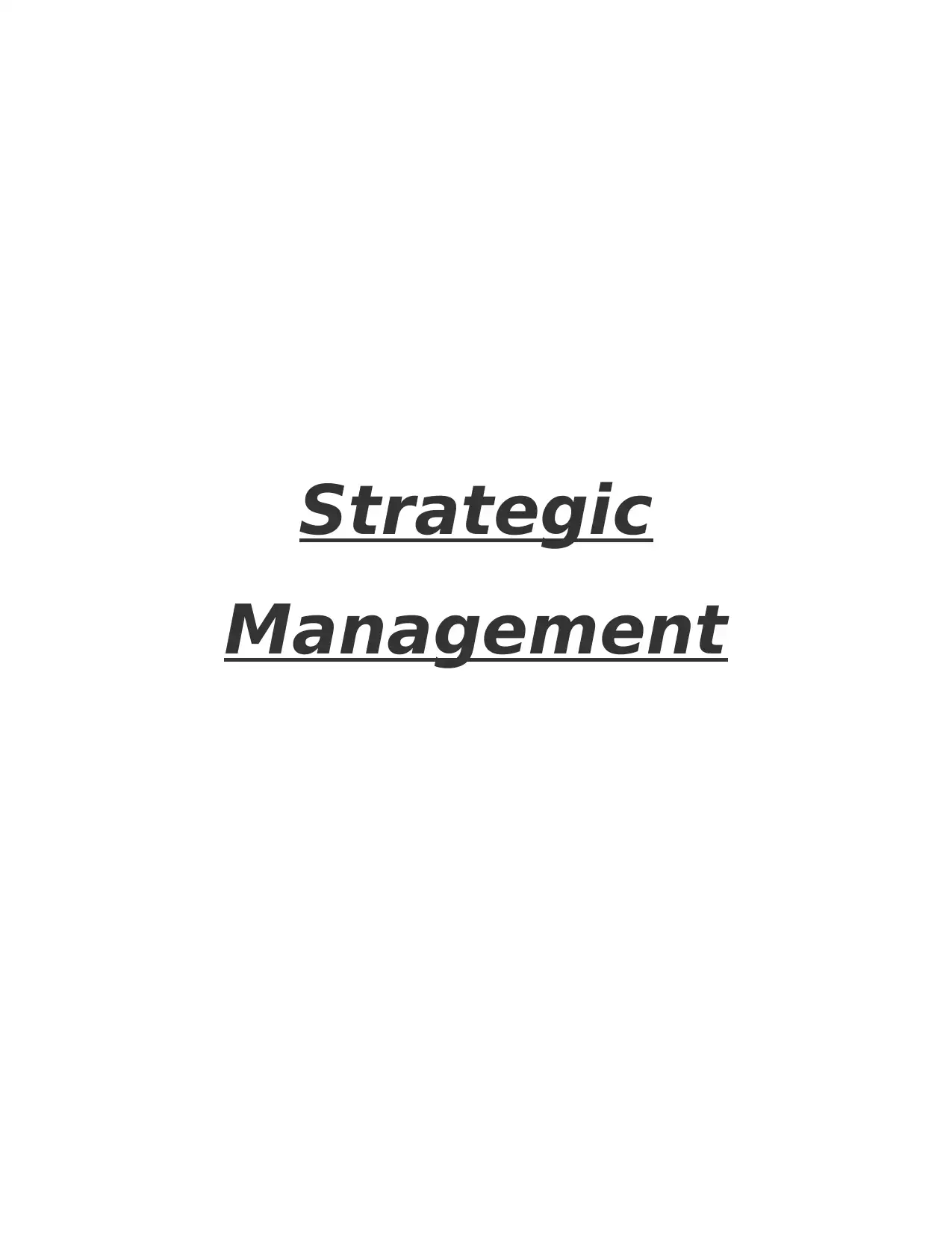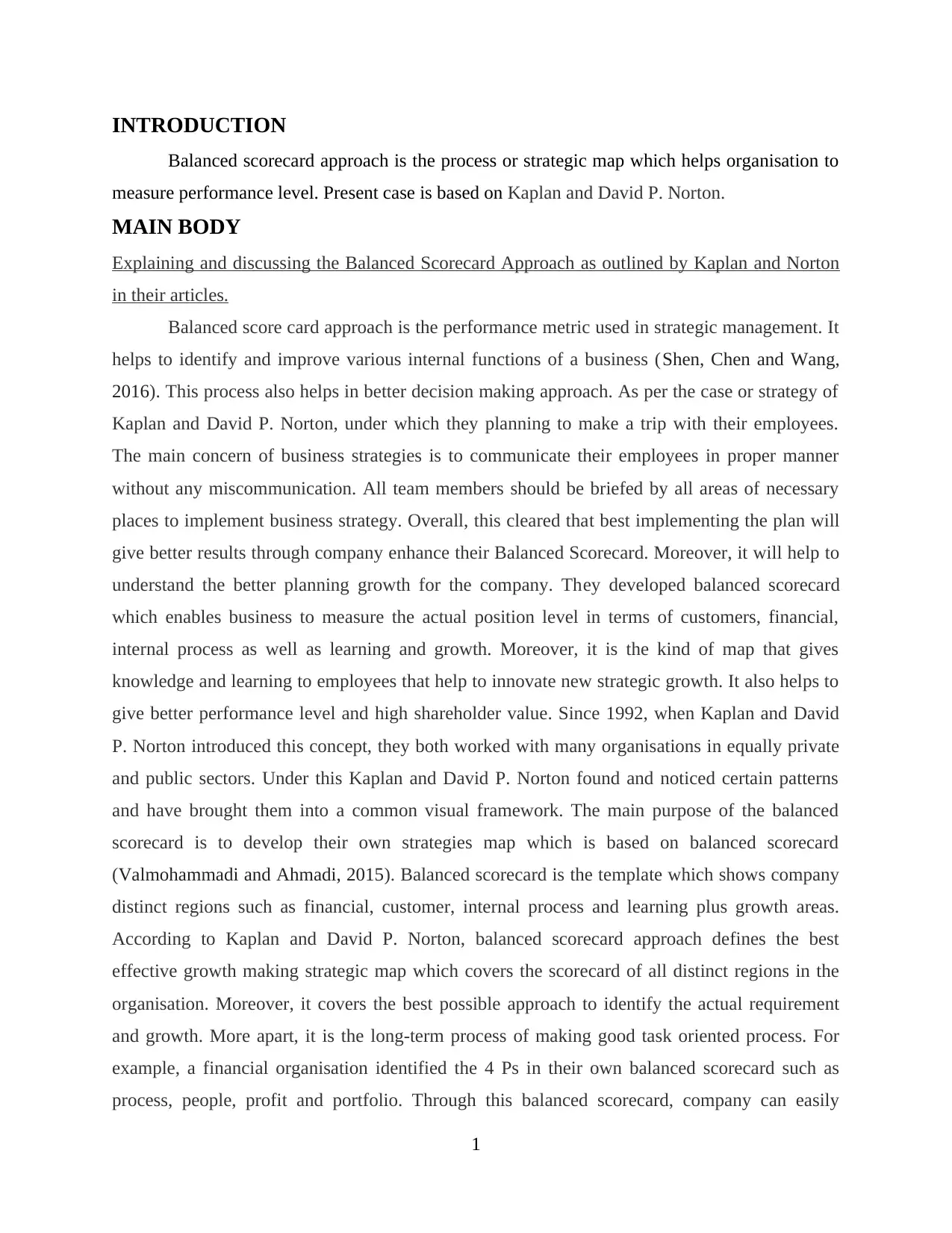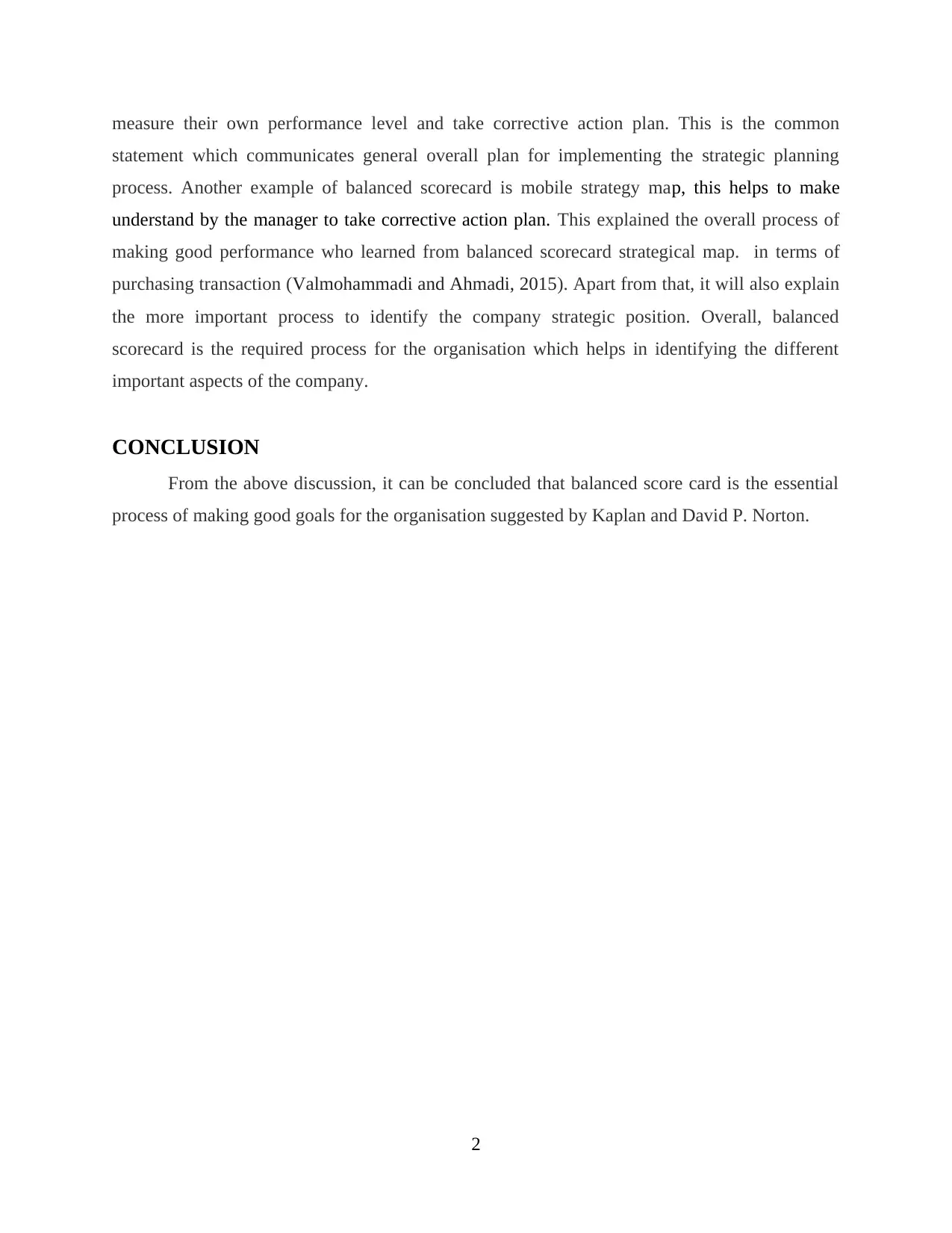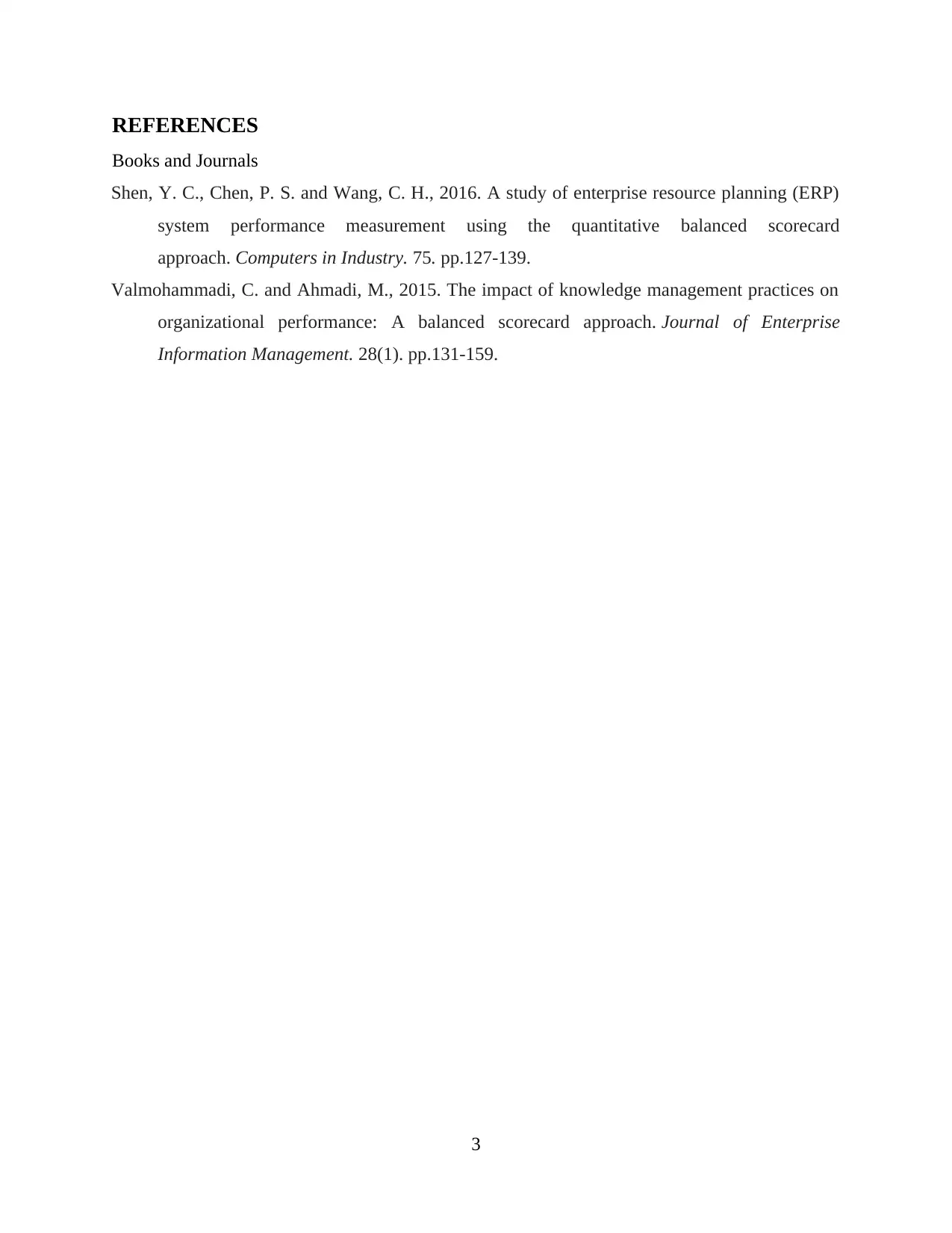Strategic Management Report: Kaplan and Norton's Balanced Scorecard
VerifiedAdded on 2021/01/01
|5
|705
|275
Report
AI Summary
This report provides a comprehensive analysis of the Balanced Scorecard approach, a strategic management tool developed by Kaplan and David P. Norton. The report examines how the Balanced Scorecard helps organizations measure and improve their performance across various internal functions, including financial, customer, internal processes, and learning and growth perspectives. It discusses the importance of clear communication of business strategies to employees, as well as the development of a strategic map that aligns with the Balanced Scorecard framework. The report highlights the benefits of the Balanced Scorecard in terms of better decision-making, improved strategic planning, and enhanced shareholder value. Examples, such as a financial organization's use of the 4 Ps (process, people, profit, and portfolio) and mobile strategy maps, are used to illustrate the practical application of the Balanced Scorecard. The conclusion emphasizes the Balanced Scorecard's essential role in setting organizational goals. The report references key academic sources, including works by Shen, Chen, and Wang (2016), and Valmohammadi and Ahmadi (2015), to support its analysis.
1 out of 5












![[object Object]](/_next/static/media/star-bottom.7253800d.svg)